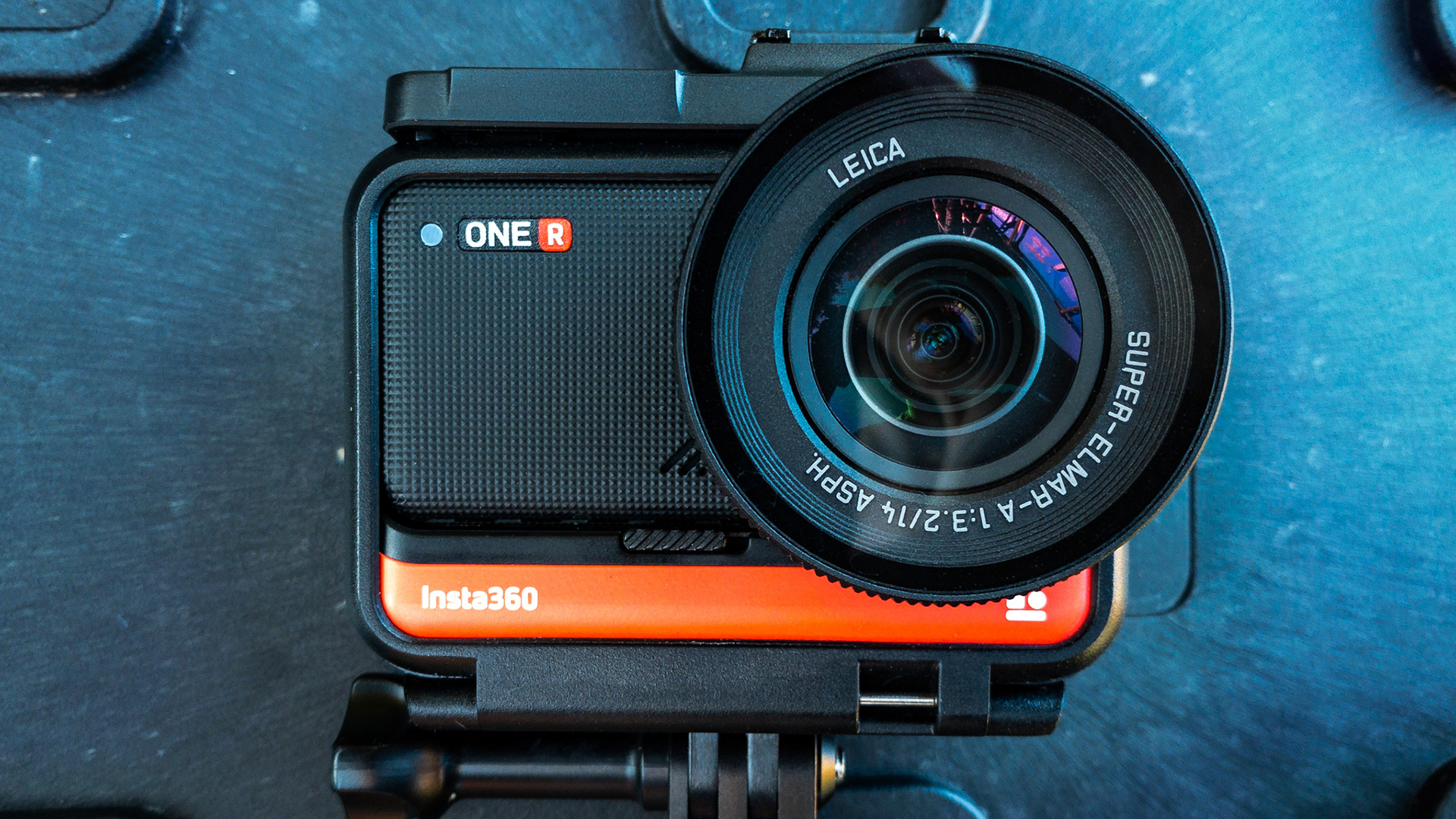
The Insta360 ONE R 1-Inch Edition has the largest sensor of any true action camera. But does it give you the best picture quality of any true action camera? Read our 1-inch Edition review to find out.

The Insta360 ONE R 1-Inch Edition has the largest sensor in a camera of its type.
The action camera market is one that until recently was dominated by GoPro. The Hero8 is still the benchmark by which all others are judged, and whilst rivals have been snapping at GoPro’s heels they have never really eclipsed it. Either the stabilisation isn’t as good, or the outright picture quality doesn’t stand up to comparison. That is until late last year when Insta360 announced the ONE R.
Since using the ONE R with the dual lens 360 module I have not only been converted to 360 video, but I have only very rarely used my Hero8. There are some things I’d like to see Insta360 do with future firmware updates, but for the most part the ONE R is one stellar action camera. However there’s one module I hadn’t had a chance to look at until now, and that’s the much vaunted 1-inch Edition.
The 1-inch Edition, as the name suggests, uses a 1-inch sensor. This is the largest sensor in any current action camera. Yes, I know about the existence of the Sony RX0 II, but that is not really a true action camera. It is also the highest resolution on the market too, with a full 5.3K of it.
The ONE R 1-inch mod was developed in cooperation with Leica. It features a fixed aperture of f/3.2 and gives a 35mm equivalent focal length of 14.4mm. Video is recorded at a whopping 5312x2988 at up to 30fps with 4K recording being possible up to 60fps. Just like the other mods the 1-inch records in H.265 or H.264 compression at around 100Mbps.
There are big advantages to having such a large sensor such as lower noise and better low light performance, but for an action camera like this there are also very useful advantages to having the higher resolution as well.
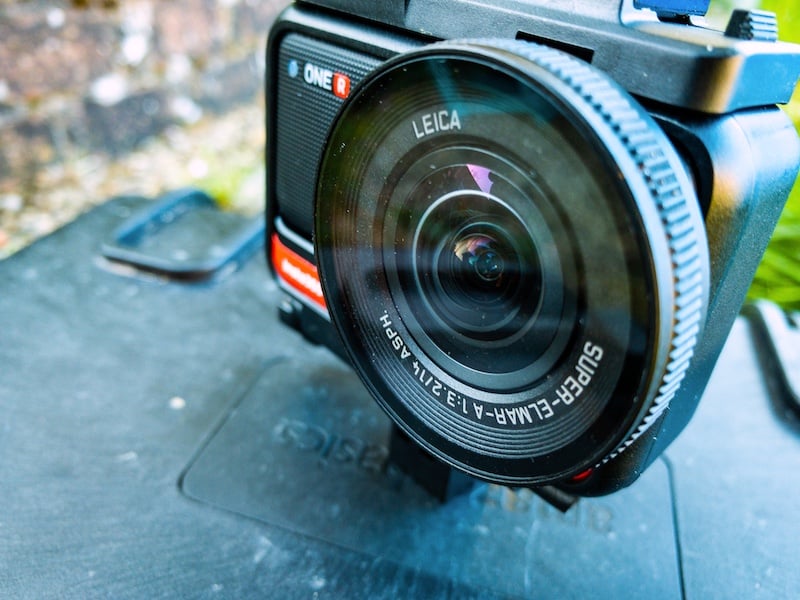
The lens isn't really that big. That's mostly the lens protector.
First impressions of the insta360 ONE R 1-Inch Edition
The 1-inch Edition is certainly a higher weight than the other mods for the camera. The main lens is protected by a large screw on protector. It’s a good thing to have, although as I would find later it does have some implications on practicality.
Turning the camera on is the same process as always and most of the same options are there. Although there’s no HDR video mode like there is with the 4K Mod. Log mode is there along with Timelapse and TimeShift modes. It also contains a 6-axis gyroscope which works in conjunction with the camera’s excellent FlowState stabilisation system.
I ordered the Vlog cage with a cold shoe mount so that I could try the module out with a RØDE Wireless GO microphone system using the USB mic adaptor. There are a couple of practical issues to think about when using the 1-Inch Edition for Vlogging or doing a mixture of normal vs selfie shots. If you want to swap the direction of the LCD screen for a selfie shot you need to remove the camera from the cage. Normally this isn’t too much of an issue, but with the 1-Inch Edition you need to unscrew the large lens protector first ao that you can remove it. Doing this can make the process of swapping the screen direction a bit cumbersome.
If you have the USB mic adaptor attached you will also need to disconnect this when you flip the screen. These are minor quibbles, but they do slow down the process.
Another thing that has to be taken into account is the minimum focus distance. The camera is fixed focus, but having a large sensor produces the side effect that you need to avoid getting too close to subjects if you want them to appear sharp. The minimum focus distance is around the 90cm mark.
This has quite a knock on effect on how you compose shots. Normally with a wide angle lens getting up close to the action is where you want to be, but you have to be much more careful with that with the ONE R 1-Inch Edition. That is unless you want to use it creatively. If the minimum focus distance can sometimes be seen as a hindrance, it is also a creative tool.
Pretty much every other action camera on the market is pin sharp from close up to infinity so shallow depth of field effects are impossible. But the ONE R 1-Inch Edition lets you use the minimum focus distance to your advantage to create depth effects from foreground objects. In certain scenarios this helps to prevent the picture appearing to look like what most people would consider to be an action camera.
The advantages of resolution
The 1-inch Edition records 5.3K footage, which might sound like overkill for a camera like this, but this is actually useful resolution. Just like the other mods in the range the camera records to its own INSV format. This format cannot just be imported straight into most NLEs, so it needs to go through a transcode process in the Insta360 Desktop app. This is an extra step compared to other action cameras, but it offers some useful advantages.
For a start the FlowState stabilisation can be turned on and off since it isn’t baked into the footage. Likewise the angle of view can be selected in the app as well. This means that you can output several different framings from the same footage. The high 5.3K resolution means that these ‘digital lenses’ have more data to work with when they zoom in, crop, or correct lens distortion.
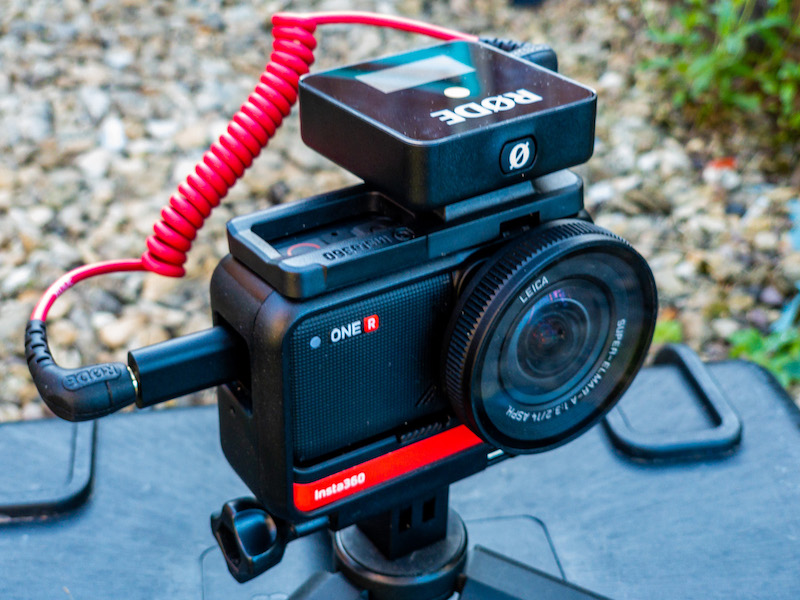
The Insta360 ONE R in Vlogging configuration with a RØDE Wireless GO microphone.
Picture quality
The angle of view of the ONE R 1-Inch Edition isn’t quite as wide as a GoPro (which is more like a 12mm 35mm equivalent), but it is still more than wide enough to use for POV shots. The only caveat to that is that there is no 4:3 mode, which is a helpful thing to have for POV.
The overall picture quality from the 1-Inch Edition is, to be frank, very good indeed overall. It is full of detail, and the dynamic range is noticeably wider than most traditional action cameras. I found that for the most part I used the camera in its default colour mode rather than the log mode. This is because while there is some extra room in the highlights it isn’t a huge amount, and the default colour mode maximises the data on offer from the 100Mbps 8-bit codec. Instead I simply lowered the EV to either -0.5 or -1 depending on the situation. I found that the shadows could be recovered fairly well.
The default colour, particularly if you are shooting with the sun behind the camera, is very good indeed. It's vibrant and saturated without being overt, and it appears pretty accurate. For most of the example footage I took I set the white balance manually.
If I had a complaint it would be similar to the one I aired in my review of the 360 module, and that’s that there is too much digital edge enhancement. You could add a very, very subtle Gaussian blur to soften things off in post, but at 5.3K resolution on a 1-inch chip, there really should be an option in-camera to turn digital sharpening off for a much more creamy smooth, yet still highly detailed image.
As I mentioned in my review of the 360 module, if we could turn off the digital edge enhancement this would really help the codec too. At present the 100Mbps is spread more thinly on. 5.3K image than it is on a 4K one. I noticed in a couple of what you could call high codec stressing shots that a number of compression issues were present. In particular a shot that involved a lot of long, fast moving grass in the wind.
This is at heart an action camera, though, so we aren't talking about something that's going to be replacing your VENICE! For the majority of other shots it works very well indeed. Is it something that could be addressed in firmware? It's doubtful, although without knowing what the maximum bitrate for the hardware inside the ONE R is, it's difficult to say for sure.
The extra resolution contained in the 5.3K image is very apparent when it comes to selecting both the Linear and the Narrow framing options. Both of these get rid of the fisheye distortion effect, and particularly in the case of the Narrow viewpoint, creates an angle of view that is more akin to a traditional camcorder.
Narrow view is not new. It's been available on the GoPro for years. But it has never been available at quite this quality before. The 1-inch Edition's sensor really comes into its own here. Although you do need to be careful in the more codec stressing shots because any compression issues become more visible in this mode.
Stills images are full of detail. At 19MP with the added dynamic range of the larger sensor they are a vast improvement over any other action camera I have used.
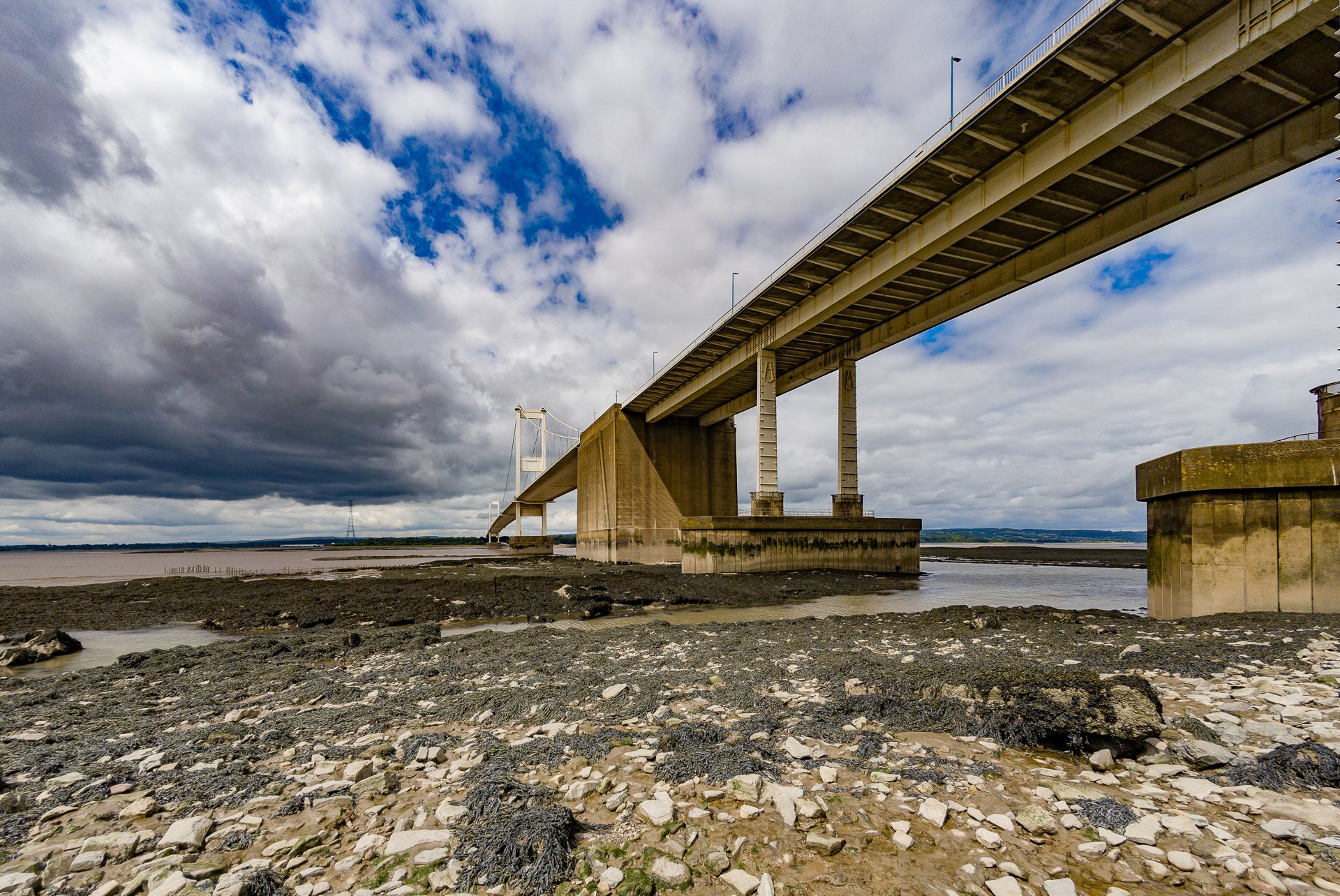
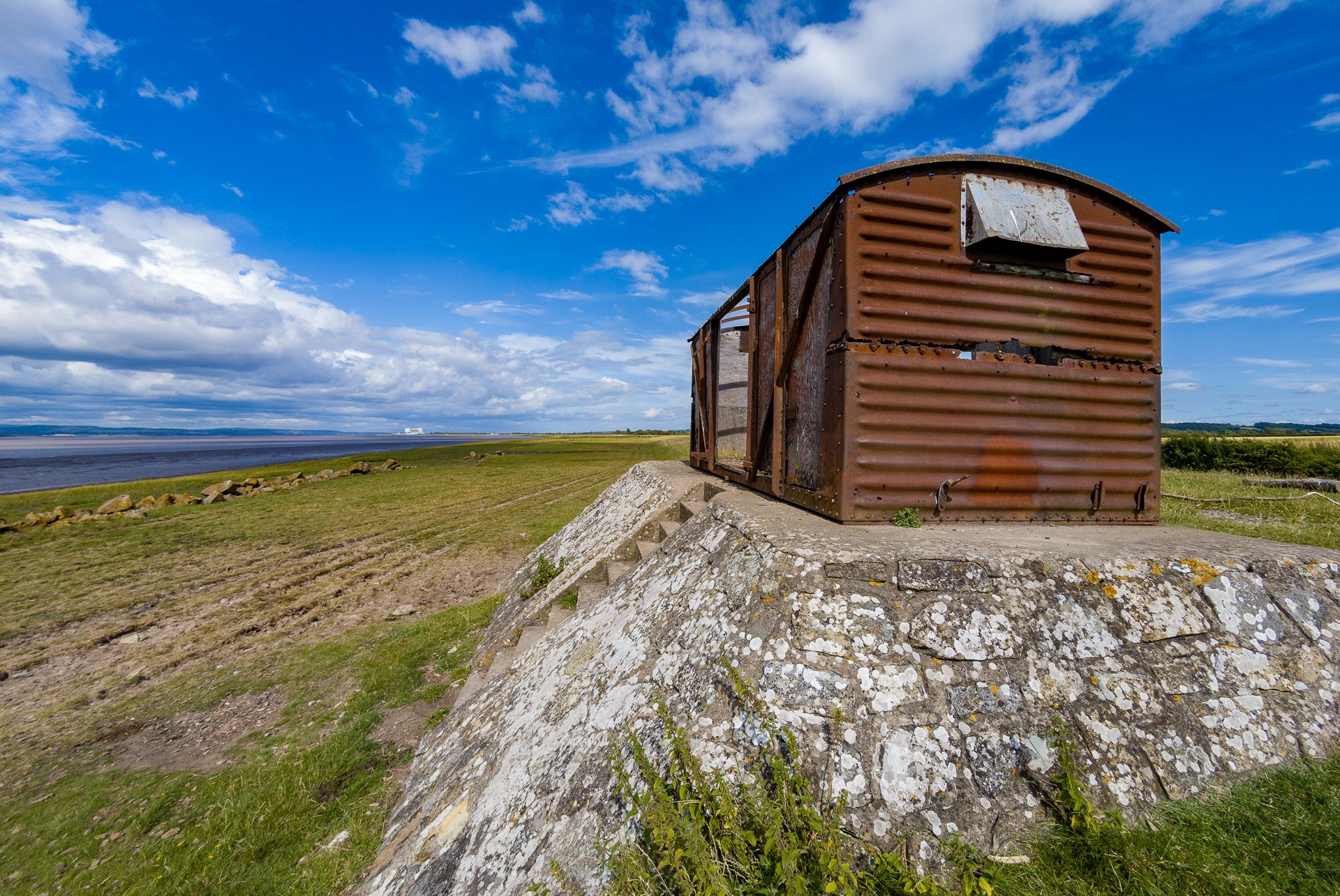
Two example stills, taken in DNG format and edited in Lightroom for both colour, lens and perspective distortion correction.
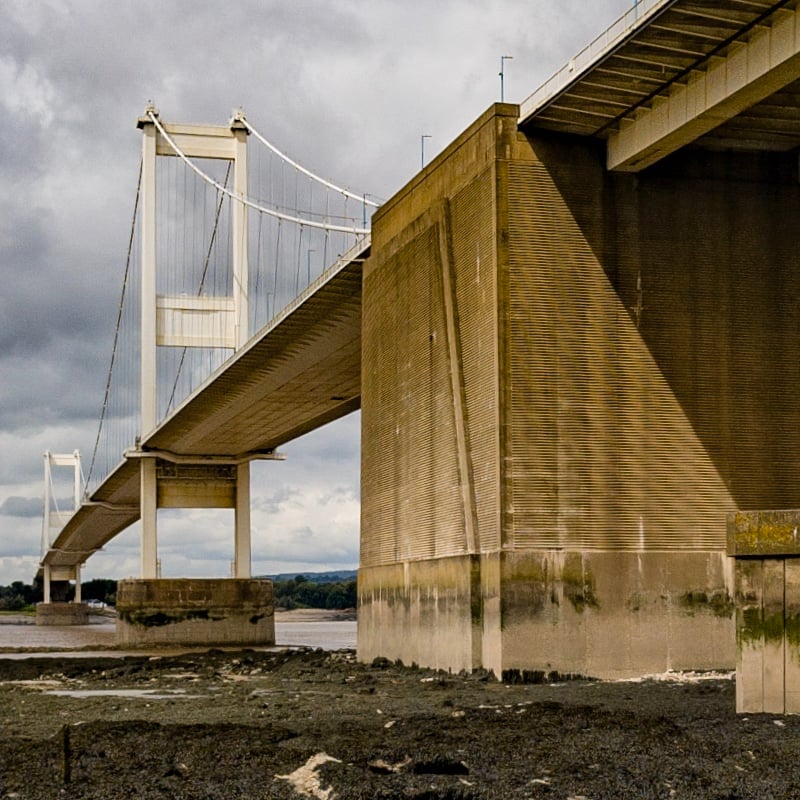
A 100% crop of the Severn Bridge shot. Stills, at 19MP are taken at the same horizontal resolution as the 5.3K video.
On a general note I noticed that if there was sun causing glare in the shot the lens flare shapes were a sort of odd oval shape. Again a very minor thing, but it might be something you want to be made aware of. With a free flowing action camera, particularly one that is head mounted, this may be unavoidable. However the 1-Inch Edition will likely be used for much more than just straight action cam duties.
One thing is certain, this is some of the best image quality you will see from a camera of this type and price.
4K at 60p has a very good image quality, too. Although once you start using 1080p at 120fps the quality does drop off a fair bit with aliasing being quite noticeable. If there's one area where ONE R does fall behind its nearest competitor it is in the slow motion stakes.
Sound recording
As an action camera the ONE R is never going to be a replacement for a dedicated camcorder. However its versatility means that it is a very capable vlogging tool. I tested out the camera using the Insta360 USB mic adaptor.
This plugs into he USB-C port, and it does stick out a fair way. It might be nice to see an alternative version that is shaped in a right angle to keep things a bit closer. If it had a plastic cover integrated into it, like the one that is on the camera normally, this might give it a bit more stability should you happen to bump into anything.
That said, once the RØDE Wireless GO mic system that I was using it with was hooked up and the volume set to max it worked very nicely indeed. So if you are making travel videos this could make for a really nice way to have an extremely compact vlogging solution.

The USB mic adaptor does stick out a fair way.
Conclusions
The 1-Inch Edition is very highly capable, but it isn’t perfect. There’s the digital detail enhancement which I live in hope that can be switched off in a future firmware, but for watersports I noticed that the inside of the screw on lens protector can be prone to steaming up. I haven’t yet had a situation where the entire lens has been obscured, but it is something to be aware of. This is likely due to the heat that the camera generates compared to the ambient temperature. I have wondered if I can stick some foil around the outer edge over the top of the Leica branding and lens spec writing. Moisture will then form on the foil before I starts to form on the lens glass.
The fact that you need to go through a conversion process on the video files before you can edit them may be a deal breaker for some. But as long as you aren't in a great hurry it's no big deal, and merely forces you to go through your footage properly in a kind of logging process.
As mentioned, and shown in the video, in extremely complex scenes the compression system can be challenged to breaking point. But this was a very rare occurrence. In fact the shot in the video was the only occasion in which I noticed any such issues at that sort of magnitude. For the majority of the time it won't be an issue. Although it does show that a boost to maybe 150Mbps or more might be something for the developers to consider in the future.
However...
The Insta360 ONE R is by far the most versatile action camera currently on the market. There is simply no other camera like it, and if you want the highest image quality possible on a tiny, affordable action camera, or indeed an extremely compact Vlog or travel camera the ONE R with the 1-Inch Edition is a device you’ll really want to consider.
It will be very interesting to see where Insta360 takes the ONE R. For instance would a C-mount interchangeable lens mod be possible? It would be a wonderful thing if Insta360 opened up the interface protocols and allowed third parties to develop certified mods of their own. The possibilities would be intriguing, from changeable lenses to heat sensitive modules.
For now though, the Insta360 ONE R is a seriously capable action camera, and to my mind the only serious alternative to the might of the GoPro, and currently it could be argued that action cameras don't get much better than this.
The Insta360 ONE R 1-Inch Edition costs £519 for the whole camera package or £279.99 if you are purchasing it as a separate module.
Tags: Production

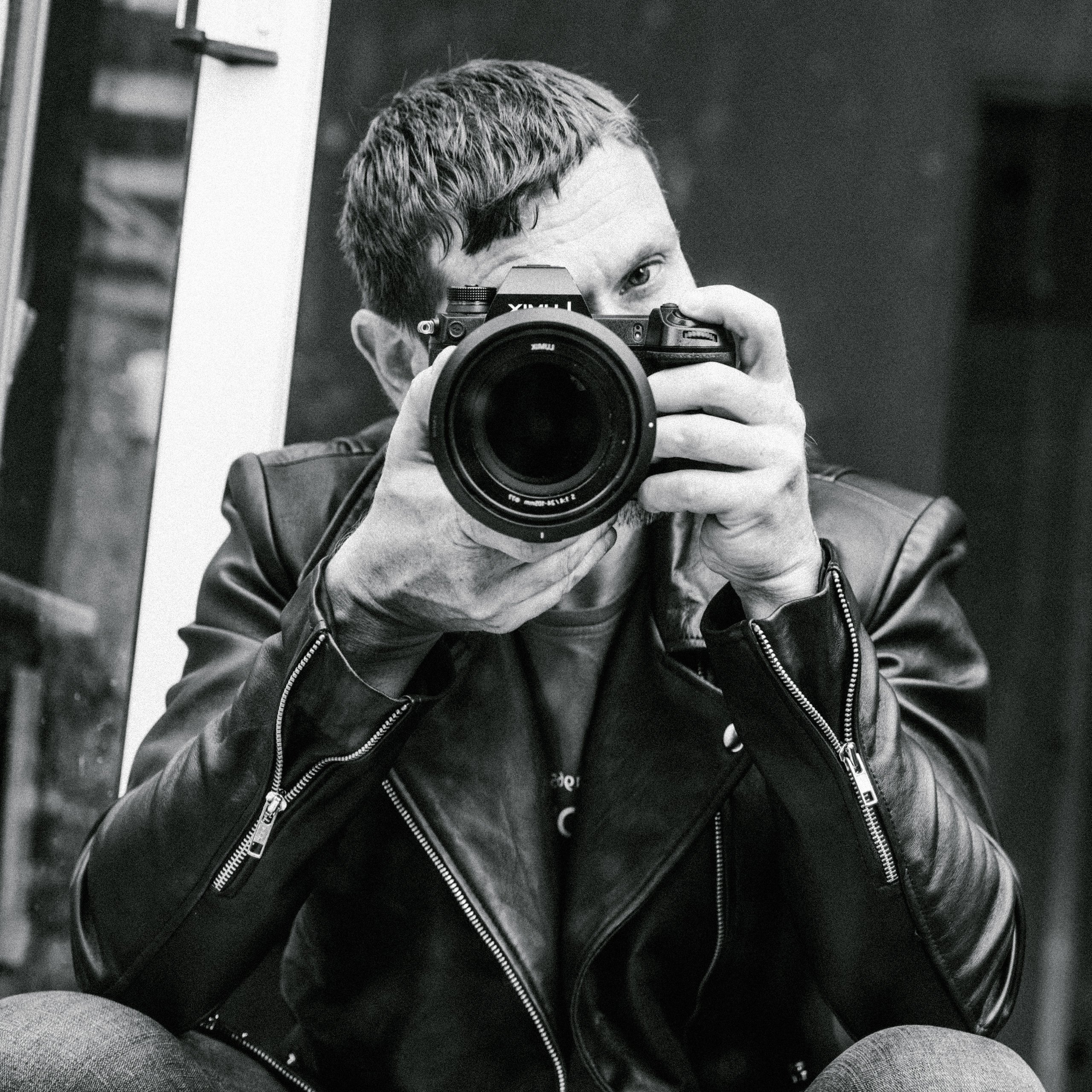
Comments